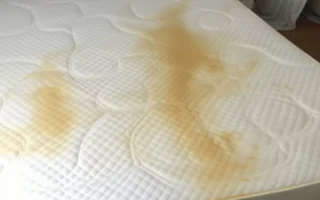Have you ever mopped your floors only to find they are still sticky afterward? Your hard work may only pay off when you see results. We’ll explore the reasons behind tacky floors after mopping and offer solutions to help you achieve that squeaky-clean finish.
Common mistakes when mopping
Mopping your floors seems like a straightforward task, but common mistakes can lead to sticky floors even after cleaning. One mistake is using too much cleaner, thinking it will make the floor cleaner when, in reality, it leaves behind a residue that causes stickiness. Another mistake is not correctly diluting the cleaner with water as directed on the packaging. This can result in a concentrated solution that only rinses off slowly. Improper rinsing techniques also play a role in sticky floors. If you don’t thoroughly rinse the mop and frequently change out dirty water during mopping, you’re spreading dirt and grime instead of removing it. By being mindful of these common mistakes and adjusting your mopping technique accordingly, you can avoid ending up with sticky floors after cleaning.
Using the wrong type of cleaner
So, you’ve just finished mopping your floors, but they still feel sticky underfoot instead of clean and fresh. One common reason for this frustrating situation could be that you need to use the correct type of cleaner on your floors. It’s easy to grab whatever cleaner is convenient or has a pleasant scent without considering if it’s suitable for the kind of flooring you have. Different floor surfaces require specific cleaners to remove dirt and grime effectively without leaving residue behind. For example, using a harsh cleaner meant for tile on hardwood floors can strip away the finish and leave a sticky film.On the other hand, using a gentle cleaner designed for wood on a tile might need to clean more effectively. To avoid ending up with sticky floors after mopping, always check that you use a cleaner appropriate for your flooring material. This simple adjustment can make a big difference in achieving squeaky-clean results every time!
Not properly diluting cleaner
Cleaning your floors with the correct cleaner is essential. But did you know that not correctly diluting the cleaner can leave behind a sticky residue? It’s a common mistake that many people make without even realizing it. If you’re using a concentrated cleaner, always follow the instructions on the label for dilution ratios. Adding too much cleaner can create a film on your floors that attracts dirt and grime, leading to stickiness. To avoid this issue, measure the correct amount of cleaner and mix it with water according to the recommended ratio. This will ensure that your floors are clean without any leftover residue. Properly diluted cleaners will effectively remove dirt and grime from your floors without leaving them sticky. So, cut your cleaner correctly for squeaky-clean results next time you mop!
Improper rinsing techniques
The best way to mop your floors is to properly rinsing is just as important as using the right cleaner. Improper rinsing techniques can leave behind residue that causes that annoying sticky feeling underfoot. One common mistake is not changing out your mop water frequently enough. Reusing dirty water only spreads grime around rather than removing it. Another oversight is not thoroughly wringing out your mop after rinsing. Excess water on the floor can lead to streaks and stickiness once it dries. Remember to use a clean bucket of fresh water for each rinse cycle when mopping more significant areas. This ensures you’re not just spreading dirt from one section to another. Properly rinsing means going over the floor multiple times until all traces of soap or cleaner are removed. It may take a little extra effort, but the result will be a squeaky-clean surface free from stickiness!
Solutions for sticky floors
There are some tips for sticky floors.
Try giving your floors a thorough rinse with clean water after mopping. This can help remove any residue left behind by the cleaning solution. Consider using a different type of cleaner specifically formulated for your type of flooring. Using the wrong cleaner can put a sticky film on your floors. If you suspect improper dilution might be causing stickiness, double-check the instructions on the cleaning product to ensure you’re mixing it correctly. Another tip is to mop in smaller sections at a time and change out your mop water frequently to prevent spreading dirt and grime around, which can contribute to stickiness. By implementing these solutions into your cleaning routine, you should notice an improvement in the stickiness of your floors moving forward.
Future prevention of sticky floors
To prevent your floors from becoming sticky after mopping in the future, you can follow a few simple steps. Use the correct type of cleaner for your specific flooring material. Read the labels carefully and choose a product suitable for your floors. Always dilute the cleaner according to the manufacturer’s instructions. Using too much cleaning solution can leave behind residue that causes stickiness. Properly rinsing your mop after each use prevents residue buildup on your floors. Consider investing in a microfiber mop or cloth, as they are more effective at picking up dirt and grime without leaving behind streaks or residue. Establish a regular cleaning routine to prevent dirt and grime from accumulating on your floors. Following these simple tips and tricks, you can keep your floors looking clean and shiny without any unwanted stickiness.




